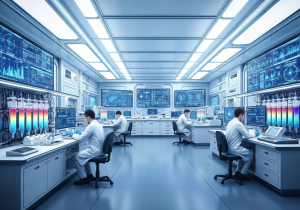Male reproductive system
The human reproductive system is a very well-articulated system of complex processes.
It leads to the most beautiful formulation of mother nature that brings a new life into this world.
It is very important for every woman to have germane information regarding constant changes that occur in their body.
The information helps women to keep a check on their reproductive health so that they can seek medical advice when needed.
Oogenesis– It is the process in the reproductive system of producing eggs and begins very early in the life of female when she is still a developing foetus.
It might sound bizarre, but a girl has all the eggs that she will require when she is born. These lie dormant and begin to develop after puberty.
During puberty, a complex interplay of hormones occurs that lead to the maturation of single egg per month.
This is released during ovulation, which might fuse with sperm to facilitate conception.
The release of the egg by the right and left ovary is a random process, and at times both the ovaries release an egg which might result in fertilization of both the eggs leading to ‘twins’ formation.
The female body undergoes two reproductive cycles per month. Several hormones, like a follicular stimulating hormone (FSH), luteinizing hormone (LH), estrogen, progesterone lead to the progression of these cycles.
Ovarian cycle– This phase of the reproductive system constitutes a major part of the reproductive system and proceeds for 28 days till the onset of the menstrual phase.
It includes maturation of ovarian follicles which is followed by the release of a mature egg from the ovary to oviduct (ovulation).
Ovulation constitutes the ‘fertility window’ and is considered the most important time, for couples seeking conception, as intercourse during this time might culminate in the fusion of egg and a sperm.
Ovulation occurs 10-16 days before the period starts. There are no physical changes in most ladies during ovulation but certain changes in cervical fluid-like- wetter, clearer and more slippery mucus might be noticed.
The post-ovulatory phase prepares the female body for implantation of the embryo by thickening of the endometrium.
Menstrual cycle– If the ovum does not fertilize in the ovulatory cycle, the endometrium lining is shed during menstruation.
The hormonal change during the menstrual cycle can cause mild to severe behavioural changes in females.
Various issues may occur like very little or very heavy flow, regular cycle with an interval less than 21 days. Sometimes one has regular cycles with interval exceeding 35 days.
Three to six months without menses which requires instant attention and a visit to a gynaecologist.
Male fertility
Fine tubules called seminiferous tubules, in testicles produce the Sperm cell, the fundamental building block of the male reproductive system.
Testis or testicles are the oval organs that lie within the scrotum. The body maintains a lower temperature as compared to other body parts, for the normal development of sperms.
The cell population in testis comprises of three different types of cells that perform the following functions:
Germ cells: sperm producing cells
Sertoli cells: nursing cells that nurture immature sperm cells for their development
Leydig cells: testosterone, a male sex hormone, producing cells
Testosterone is responsible for the development of male characteristics like strength, bone mass, facial hair and even sex drive.
Production of millions of sperms takes place every day. They take around 72 days for maturation. They pass through several male reproductive organs- from seminiferous tubules into the epididymis and released into vas deferens after maturation.
The urethra finally releases them during ejaculation. Therefore, it is recommended to have a healthy diet and opt healthy lifestyle three months prior to planning conception.
Tests for male infertility
The most important thing while facing infertility is to understand that conception involves both the partners and the problem in either of the partners might be causing the problem.
Both the partners need to be confident and supportive of each other and ready for the medical examination and tests to determine the cause.
Since male infertility is a social stigma in certain strata of society and not openly discussed, many males stay unaware of the medical procedures available to test it. We will, therefore, like to discuss in detail, the medical testing required to determine male infertility.
Infertility tests might be expensive and, therefore, it is important to understand the requirement of different tests that are asked to be conducted.
Examining male infertility begins with a visit to a urologist who will examine you physically and ask questions regarding your lifestyle and medical history.
He might also have a frank discussion regarding your sex life, sexual habits and sexual development during puberty. Male infertility is a complex issue.
A vast number of factors lead to this. So a detailed discussion with the doctor about past history, medications etc is important.
Laboratory test
Semen evaluation
Semen analysis is the most common and important parameter to determine male infertility. For semen analysis, a lab technician collects the semen and analyses the properties such as-
Volume– The volume of semen sample should be 2 millilitres after liquefaction. The lesser volume indicates low sperm concentration and higher volume might lead to sperm dilution
Colour– Semen is normally translucent or whitish-grey in colour. Semen that is yellowish, reddish, greenish or brownish depicts abnormality.
Liquefaction– Semen should get watery after keeping it stable for 15-30 min. If the semen is thick, it can affect the movement of sperms.
Viscosity– Highly viscous semen can be the cause of infertility
and then the technician will examine sperms under the microscope to determine
Sperm concentration (no. of sperm cells)- The normal sperm count must range between 20 million to 200 million.
Sperm motility (movement)- It is an important factor as sperm need to travel to ovum to achieve fertility. Conception requires more than 50% motile sperms.
Sperm morphology (shape)- 50% of sperms should have normal head, mid-section and tail to achieve fertility. If a man has more than 50% sperms that are abnormal in shape, chances of conception decrease.
Our sample collectors collect Samples for semen analysis from your home. You can download the report directly from the site. To book for the sample collection services, book here.
Computer-assisted semen analysis (CASA)- To avoid manual errors while examining semen, an automated technique CASA provides fast, accurate and repeatable results.
Analysis of the sperms through image analysis and tracking the cell movement is important.
Collection of a detailed report for motility and concentration along with morphological images in real-time is possible. CASA is available in a few labs in India and is more expensive as compared to manual methods.







